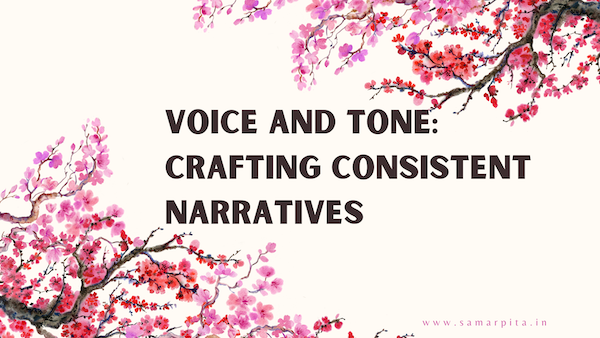When crafting narratives, it’s important to consider not just what is being said, but how it is being said. Voice and tone are two crucial elements that contribute to the overall impact and effectiveness of a narrative.
Voice refers to the personality and perspective of the narrator or speaker, while tone refers to the attitude or emotional inflection behind the words. Together, these elements create a consistent and cohesive narrative that can engage, persuade, or inform an audience.
Also Read: Story Structure: Understanding the Elements of Plot and Narrative Arc
Distinct Voice
The first step in crafting a consistent narrative is to establish a clear and distinct voice. This can be achieved by determining the persona of the narrator or speaker, such as whether they are serious, humorous, or authoritative. It’s important to consider the target audience and the message being conveyed when deciding on a voice, as the chosen persona should resonate with both.
Maintain Consistency
Once a voice has been established, it’s important to maintain consistency throughout the narrative. This can be achieved through the use of consistent language, syntax, and point of view. For example, if the narrator is using a casual, conversational voice, they should avoid using overly formal language or switching to a more formal tone mid-way through the narrative.
Also Read: Understanding the Role of an Editor in the Publishing Industry
Consider the Tone
In addition to maintaining a consistent voice, the tone of the narrative should also be carefully considered. The tone can help to convey the emotional impact of the message, whether it be serious, somber, or light-hearted. It’s important to remember that the tone should be appropriate to the content of the narrative, as using an inappropriate tone can be off-putting to the audience.
Create a Style Guide
One way to ensure consistency in both voice and tone is to create a style guide. This guide can outline the specific language, tone, and formatting guidelines to be used throughout the narrative. It can also include examples of previous content that has been successful in achieving the desired voice and tone.
Also Read: Tips for Writing a Memorable Opening Scene
Understand the Context
Another important factor in crafting a consistent narrative is understanding the context in which it will be presented. For example, a narrative designed for social media may require a more casual and conversational tone than one designed for a professional presentation. By understanding the context, the narrator can tailor their voice and tone to better connect with the audience.
Review the Narrative
Finally, it’s important to review and revise the narrative as needed to ensure that it remains consistent and effective. This may involve soliciting feedback from others, such as colleagues or focus groups, to ensure that the voice and tone are resonating with the intended audience.
Conclusion
In conclusion, voice and tone are two crucial elements in crafting a consistent and effective narrative. By establishing a clear and distinct voice, maintaining consistency throughout the narrative, and tailoring the tone to the context, the narrator can engage, persuade, or inform the audience. Through careful consideration and revision, a consistent narrative can be crafted that effectively conveys the intended message.
This post is a part of #BlogchatterA2Z 2023
***
If you are looking for an excellent manuscript editor, someone to create content for your business, or an expert to help build your personal or professional brand on social media, then look no further and connect with me at editor@samarpita.in I can be followed on instagram at @samarpita and on twitter at @samarpitadotin.
***********
Read my ebook WRITE. EDIT. PROMOTE. to learn the basics about becoming an author – from writing your own book, to editing your first draft, and to promoting your book yourself! You can also read my ebook How To Write A Story Effectively and learn some valuable lessons about how a story can go from average to extraordinary. This book is part 1 of the series.
In fiction, I have two short stories for children in an ebook called Bedtime Stories.


